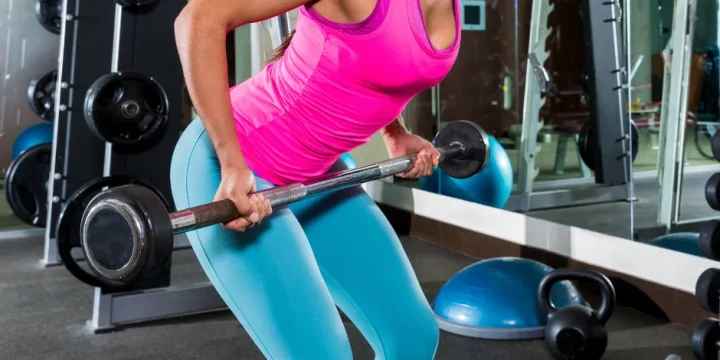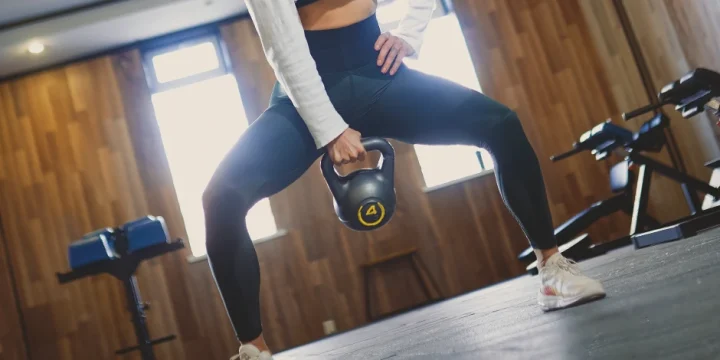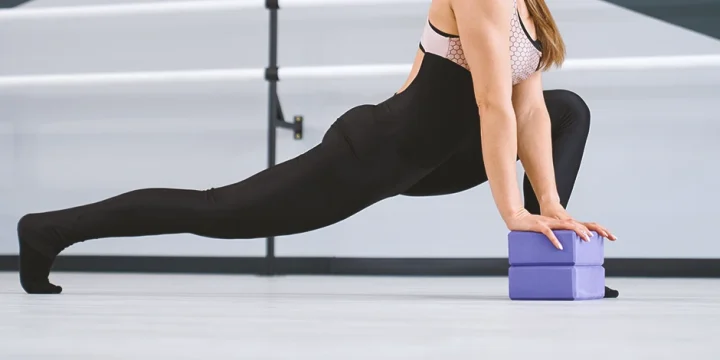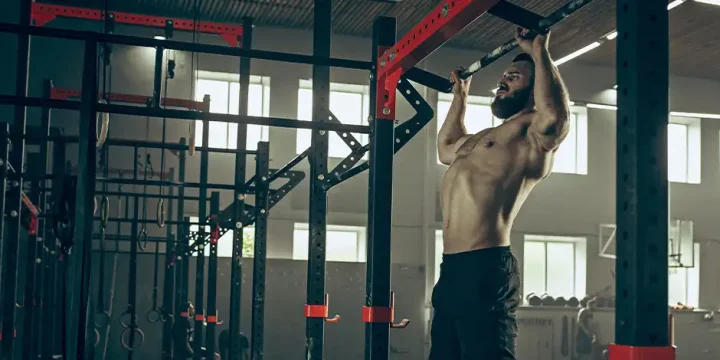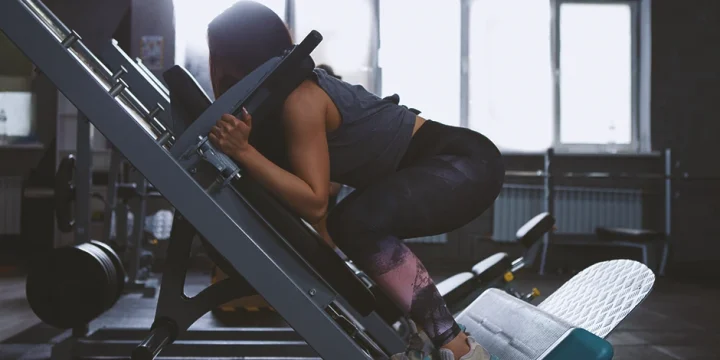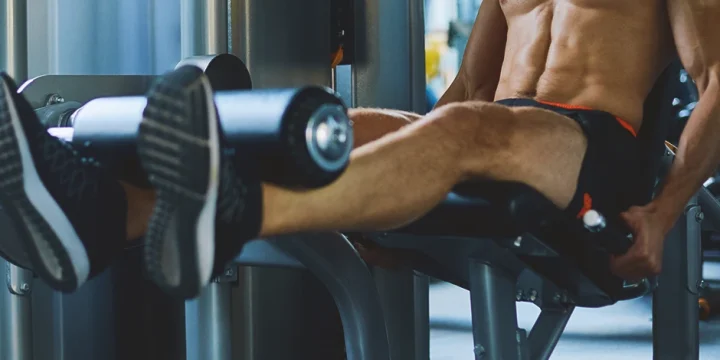Seated cable rows allow you to target the back from various angles and maximize muscle recruitment.
However, there are situations where a cable machine may not be available or preferred.
Whether you perfect home workouts, your gym lacks a cable machine, or you simply desire more exercise options, there are plenty of seated cable row alternatives to explore.
Drawing from my extensive experience as a fitness expert, I have curated a list of back exercises that encompass bodyweight movements, resistance band exercises, free weight options, and alternative machine exercises.
Quick Summary
10 Top Seated Cable Row Alternatives

1. Bent Over Barbell Row
How to do this exercise:
- Stand with your feet shoulder-width apart with your toes pointed slightly outwards.
- Grab your favorite barbell at home or at the gym using a wide overhand grip slightly wider than shoulder-width.
- Hinge your hips back while slightly bending your knees to lower the barbell as far as possible without rounding your back.
- Drive the weight up by bringing your elbows above your body.
- Hold for a while at the top of the movement while contracting your shoulder blades.
- Return to the initial position while maintaining a neutral back.
- Repeat until you complete three sets of fifteen reps.
2. T-Bar Row Machine
How to do T-bar rows:
- Position your chest on the machine’s chest pad while keeping your feet flat.
- Reach down and grab the handles.
- Bring your elbows back and pause at the top of the movement for two seconds while squeezing your shoulder blades.
- Return to the starting position by slowly extending your arms, maintaining control throughout the movement.
- Repeat until you complete three sets of fifteen repetitions.
3. Dumbbell Single Arm Row

How to do this exercise:
- Position your left hand on a flat bench and position your left knee on the bench and your right leg to the side for stability.
- Grab a good dumbbell with the right hand, ensuring a firm grip.
- Slowly lift the dumbbells towards your chest, keeping your elbows close to your body.
- Hold for three seconds before allowing your arm to extend to return to the starting position.
- Repeat until you complete three sets of fifteen reps, then switch to the other arm.
“When substituting the cable row with the dumbbell row for the purposes of muscular hypertrophy and strength conditioning, it is best to utilize a somewhat lower range of repetitions in comparison to the cable row, with most dumbbell row performers performing reps between the numbers of five to twelve at most.”
- Debbie Luna, Fitness Editor
4. Pendlay Row
How to do this exercise:
- Stand slightly wider than shoulder-width in front of the barbell and point your toes slightly outwards.
- Bend down to place the barbell in the mid-foot area.
- Grab the weight with a double overhand grip slightly wider than shoulder width.
- Rotate your pelvis to pull your spine to a neutral position.
- Drive your elbows up to make a 90-degree angle at the top end of the range motion.
- Extend down your arms to return to the starting position.
- Repeat until you complete three sets of eight to twelve reps.
5. Inverted Rows
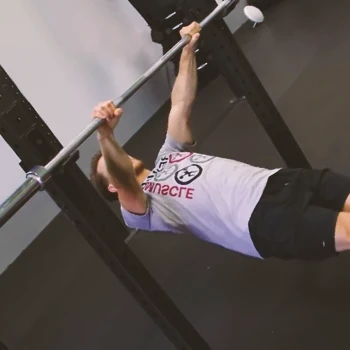
How to do this exercise:
- Set your barbell up on a quality power rack at a height that allows you to hand underneath with your arms extended without your back touching the floor.
- Position yourself under the barbell and hold it with an overhand grip.
- Pull yourself until your chest touches the barbell while contracting your core and keeping your body straight.
- Lower yourself down to return to the starting position.
- Repeat until you complete three sets of eight to twelve reps.
6. TRX Rows
How to do this exercise:
- Grab each of the TRX handles, ensuring they’re even in length.
- Walk your feet backward until you are leaning back at around a forty-five to sixty incline relative to the floor, keeping your core engaged and chest lifted.
- Pull yourself up through the elbows.
- Pause for three seconds before allowing your shoulders to stretch out.
- Return to the initial position by lowering yourself in a slow, controlled manner.
- Repeat until you complete three sets of eight to twelve reps.
“If, while performing the TRX row, you notice your hips sagging or slouching toward the ground, or if your body isn't forming a straight angle from heels to head, chances are you aren't sufficiently engaging your core. Check your form in a mirror, draw your belly button toward your spine, tuck your pelvis forward, and roll your shoulders back.”
- Laura Williams, Certified Exercise Physiologist
7. Seated Resistance Band Rows
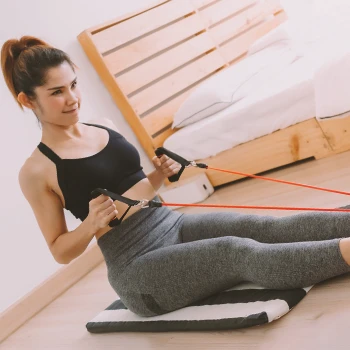
How to do this exercise:
- Sit on the ground with your legs in front of you.
- Grab the band and loop it around the soles of your shoes.
- Sit up nice and tall and keep your shoulder back and relaxed.
- Grab a featured resistance band on its handles and pull towards your body, keeping your elbows near your body.
- Hold at the top of the movement for three seconds while squeezing your shoulder blades together.
- Slowly release to return to the initial position.
- Repeat until you complete three sets of fifteen reps.
8. Seal Row
How to do this exercise:
- Place a weighted barbell underneath a highly rated weight bench right under your head.
- Lay face down on the bench, ensuring that your legs are resting on the bench for stability.
- Reach forward and hold the weight with an overhand grip. Keep your hands slightly wider than shoulder-width apart, fully extend your arms, and place your hands directly underneath your shoulders.
- Drive your elbows back toward your hips to raise the barbell as high as possible.
- Pause for two seconds to feel the contraction of the back muscles at the top of the movement.
- Lower the barbell in a slow, controlled manner to return to the starting position.
- Repeat the movement for three sets of twelve reps.
9. Incline Bench Dumbbell Row
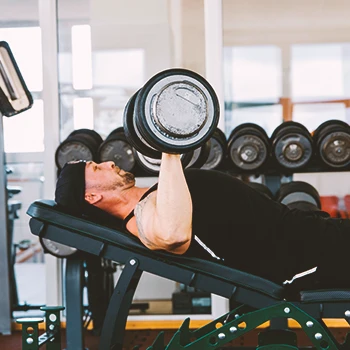
How to do this exercise:
- Place two dumbbells near an inclined bench (around 45 degrees).
- Lay face down on the bench, ensuring your toes are firmly planted on the floor for stability.
- Grasp a dumbbell in each hand with your arms fully extended.
- Drive your elbows back to pull the weights towards your hips.
- Hold for two seconds at the top of the movement while squeezing your shoulder blades.
- Lower the dumbbells by extending your arms to return to the starting position.
- Repeat until you complete three sets of twelve reps.
10. One-Arm Cable Rows
How to do this exercise:
- Put your left foot on the footplate and your right foot on the ground.
- Grab the handle with your left hand and put your hand on the bench.
- Pull your elbow back toward your hip.
- Return to the initial position by fully extending your arms. Do not let your shoulder row too far forward.
- Repeat until you complete three sets of fifteen reps.
- Make sure you choose a quality cable machine to perform this on.
“If the weight is so heavy that you cannot go through the full range of motion with good form, it is too heavy. Reduce the weight and ensure you get a full range for this exercise. A good rule is to start with a lighter weight while focusing on form, then add more weight once you know you are doing the exercise correctly.”
- Paul Rogers, Personal Trainer
What Are the Benefits of Seated Cable Row Alternatives?

Having experienced the benefits firsthand, I can attest that seated cable row alternatives offer improved posture, enhanced strength and muscle mass, increased variety, and a reduced risk of injury.
- Reduce the risk of injury - Incorporating various exercises can help prevent overuse injuries that may arise from repetitive movements, according to research from the Physical Therapy journal [1]. Moreover, these seated cable row alternatives can be modified to reduce strain on vulnerable areas like the lower back and shoulders, making them ideal for those in recovery or looking to prevent common workout injuries.
- Avoid plateaus - Revitalize your workout and break through plateaus by varying your exercises, offering fresh stimuli for continued progress. A PLOS One study revealed that participants varying their routine showed a notable 0.58-point increase in training motivation, unlike the control group, which saw a slight decline in motivation [2].
“When you do the same exercises over and over, your body isn't the only thing that adapts. Your brain adapts as well, getting so used to certain movement patterns that you zone out as your body goes through those familiar motions.”
- Paige Waehner, Certified Personal Trainer
- Accessible equipment - Most seated cable row alternatives require minimal equipment, which is readily available at most gyms. Many of these movements can be performed at home, making them accessible options for fitness enthusiasts.
- Muscle isolation - Alternatives to seated cable rows, like the bent-over row and one-arm dumbbell row, excel at isolating specific back muscles, including the lats and traps. This precision enables the integration of advanced techniques such as drop-sets, supersets, and eccentric loading, enhancing workout intensity and effectiveness.
- Improved strength and endurance - Seated cable row alternatives allow you to activate muscle fibers in a different way, enabling you to overcome plateaus and progressively increase your strength and endurance over time.
- Multiple grip options - The seated cable row alternatives above allow you to enhance your grip strength and improve your overall arm strength.
- Improved posture - Incorporating these exercises can help improve your posture by strengthening the back muscles, leading to a more upright position.
- Increased overall upper body strength - The seated cable row can help you enhance your upper body strength by working the muscles in your back, arms, and shoulders.
FAQs
What Makes for a Good Seated Row Alternative?
What makes a good seated row alternative is the ability to target the same muscles, provide minimal strain on the lower back, accommodate different grip variations, and facilitate higher rep ranges and increased volume.
What are The Muscles Used in Seated Rows?
The muscles used in seated rows are the trapezius, rear deltoids, rhomboids, latissimus dorsi, and teres major/minor.
References:
- https://pubmed.ncbi.nlm.nih.gov/11856068/
- https://www.ncbi.nlm.nih.gov/pmc/articles/PMC6934277/
About The Author
You May Also Like
